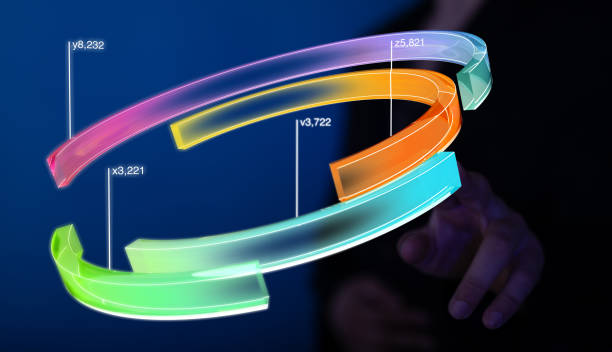THE MACD INDICATOR – HOW TO USE THE MACD CORRECTLY
The MACD is a popular trend-following and momentum indicator. It is based on moving averages and is, therefore, ideal for acting as an additional momentum filter and tool.
This article will help you understand what the MACD indicator is, how it can be used to analyze prices, and how you can use it for your trading.
Let’s first look at each component of the MACD:
MACD-Line: This line is at the core of the indicator. The MACD line represents the difference between the 12-period EMA and 26-period EMA. The MACD line represents a system of moving average crossover.
Signal line: This is the MACD line’s 9-period EMA. The Signal line, in essence, is a moving average on top of a moving average.
Histogram MACD: A histogram is a difference between the MACD and Signal lines.
The Basics of the MACD Indicator
MACD is based on moving averages and is ideal for analyzing trends, finding trend-following entries, or staying in a direction until the momentum has died off.
This article will explain how to trade using the MACD.
1) The MACD Line crosses at 0
Below is a screenshot showing the MACD and Signal lines at the bottom of the graph. On the charts, I plotted both moving averages (12 EMA and 26 EMA).
The MACD is easy to understand.
The MACD line also crosses below 0 when the MACD lines cross the two EMAs at the price chart – the cross is marked with an x and a vertical arrow.
The MACD looks identical to the regular moving average crossover.
As we learned in our article on moving averages, the cross between two Moving Averages can indicate a change of momentum and often signal a new trend.
When the MACD Line crosses 0, it indicates that momentum has changed and a potential new trend is starting.
2. The space between the MACD
When the MACD lines separate, it indicates that the momentum and trend are increasing.
When the MACD lines come closer together, this indicates that the price is losing its strength.
We can also use the 0-line to break a tie in a trend. The price is considered to be in an upward direction when the MACD lines are both above the 0-line. When the two MACD lines are below the zero line, then the price is in a downtrend.
TREND FOLLOWING STRATEGY
During ranges, your MACD lines are typically very close and hover around the zero line. This means there is no momentum or strength in the market.
Please take a look below at the MACD chart to see how it helps us understand different market phases.
At point #1, the price was trading in a small range. The MACD lines were hovering close to the 0-line. They also crossed constantly. The MACD lines began to pull away from the zero line when the price started to rise.
You can also draw trendlines, support and resistance levels, or both directly on the MACD indicator. Breakouts of the MACD are another important signal.
The MACD lines were well above the zero line during the next trend, which confirmed the bullish sentiment. The Moving Averages can be an excellent addition to a trend-following approach. They keep you in the movements until they are broken.
At point #3, the price entered a consolidation phase in which it moved sideways. During the consolidation, the MACD retreated all the way down to the 0-line. The MACD breakout and price action led to the new trending phase.
During the fourth trending phase, the MACD was once again above the zero line. The bullish trend will continue as long as the MACD remains above 0.
The MACD has lower highs than the price at the top of the chart (#5). This is a classic signal of divergence. Divergence is a strong reversal pattern that signals a decrease in trend momentum.
The MACD dropped below the zero line for the first time after the divergence. The MACD stayed below zero all the way, starting a new period of down-trending.
MACD DIFFERENCES AS EARLY ENTERPRISES
Divergences MACD can also be used to find trend-following trades.
The market initially was in an uptrend. This resulted in a rapidly rising MACD.
The price rose very slowly, but not much. The MACD has turned lower, which indicates a change in momentum.
The MACD started to break below the zero line when the price fell below two moving averages during a period of strong selling. This signal often signals more bearishness in the future.
Indicators are a valuable addition to trading because they provide objective, easy-to-understand information. The MACD is a useful indicator for trend traders because it can analyze trends and momentum.




Post Comment